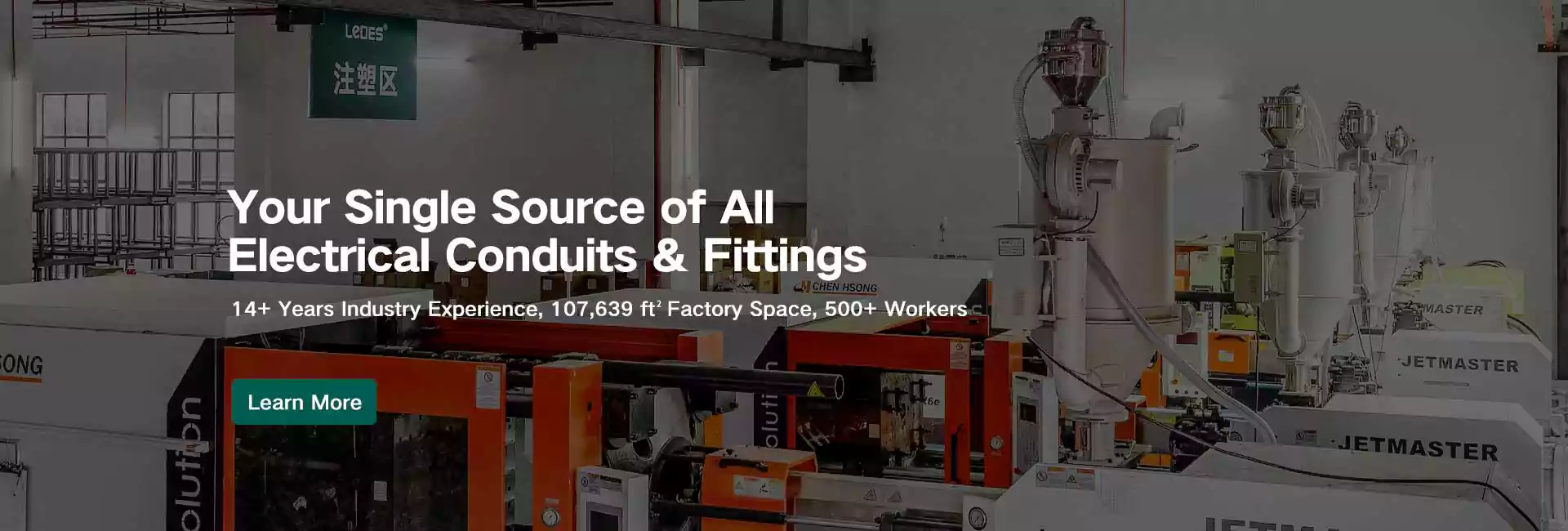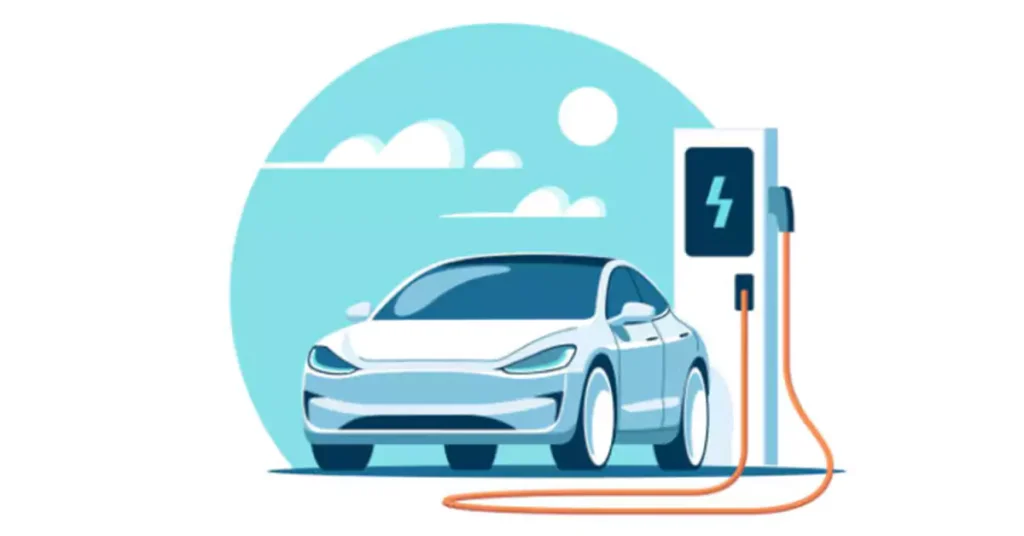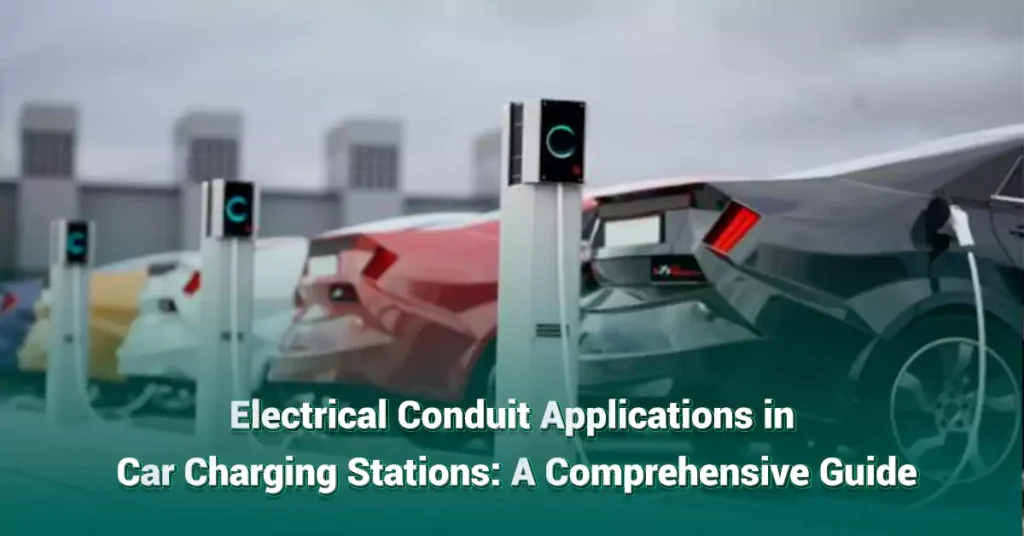
목차
As the world shifts toward electric vehicles (EVs), the demand for efficient, safe, and reliable EV charging infrastructure has grown exponentially. One crucial element of this infrastructure is the electrical conduit system, which protects the wires that carry power to charging stations. EV charging stations, especially those handling high-voltage and high-current demands, require conduit systems capable of withstanding harsh environments, preventing electrical hazards, and maintaining operational efficiency. This article explores the types of conduits used in EV charging stations, the specific requirements for these systems, and best practices for installation.
EV charging stations are locations where electric vehicles can recharge their batteries by drawing power from the grid. These stations are a vital component of EV infrastructure and come in various levels, depending on the speed and power capacity they offer. Understanding these levels helps illustrate why proper conduit selection and installation are critical.
Level 1 Charger
- Voltage/Power: 120 volts AC (common in household outlets).
- Charging Speed: Adds 3-5 miles of range per hour.
- Best For: Residential use or overnight charging.
Level 2 Charger
- Voltage/Power: 240 volts AC.
- Charging Speed: Adds 10-60 miles of range per hour.
- Best For: Homes, businesses, and public stations needing faster charging.
Level 3 Charger (DC Fast Charger)
- Voltage/Power: 480 volts DC or higher.
- Charging Speed: Can charge 80% of a vehicle’s battery in 30 minutes.
- Best For: Public stations in commercial or highway locations where quick charging is essential.
Each charging level has different voltage and current requirements, making it vital to use appropriate electrical conduit systems for safe and efficient power delivery.
Electrical conduits serve as protective pathways for the wires that transfer power from the electrical grid to the EV charging station. Various types of conduits can be used, each with specific applications based on installation environments, voltage levels, and safety considerations. The most common types of conduits used in EV charging stations include:

Best For: Outdoor and underground installations where high durability is required.
Benefits: Offers superior protection against physical damage and corrosion, and can serve as a grounding path.
Application: RMC is ideal for high-voltage installations (such as Level 3 chargers), as it can withstand significant environmental stresses.
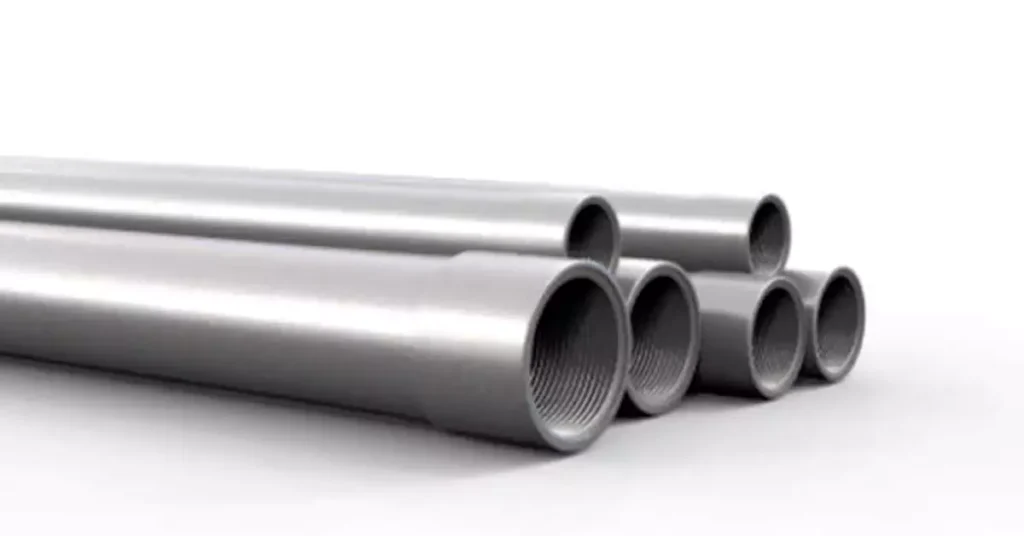
Best For: Outdoor and commercial environments.
Benefits: Lighter than RMC but still provides excellent durability and strength.
Application: Often used in commercial EV charging stations where the conduit is exposed to both physical impact and environmental factors.
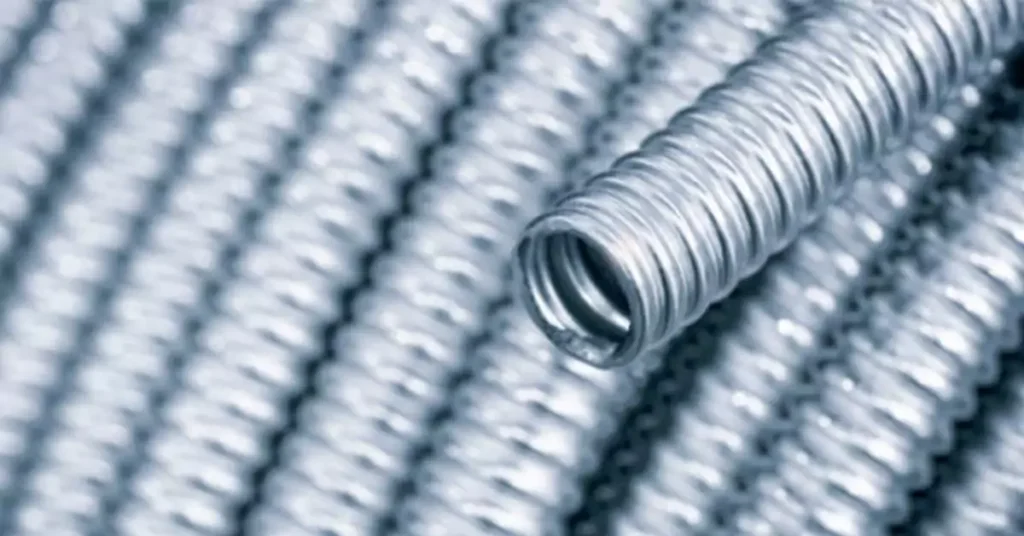
Best For: Indoor installations or environments with minimal physical damage risks.
Benefits: Lightweight and easy to install, making it cost-effective.
Application: EMT is commonly used in parking garages or indoor EV charging stations where high physical protection is less of a concern.
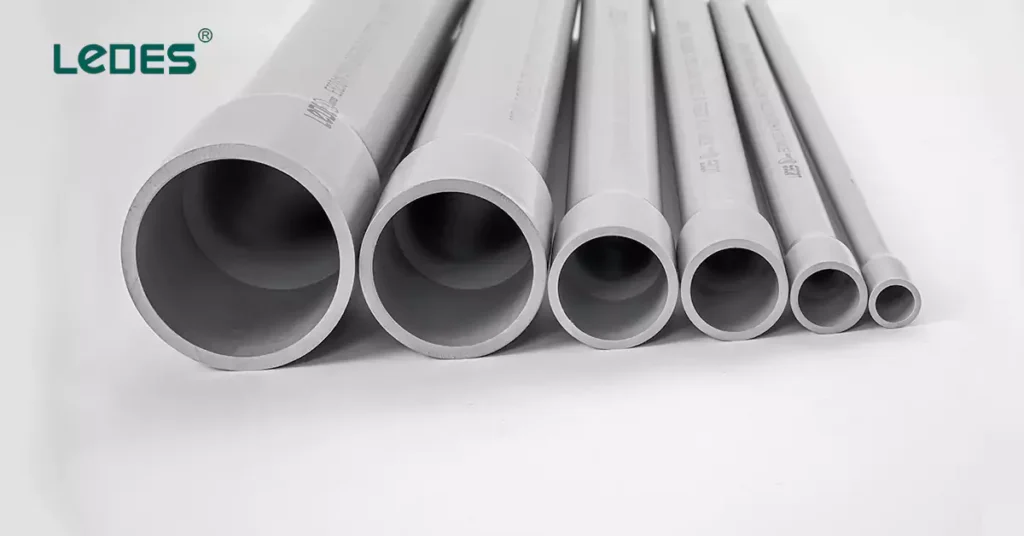
Best For: Outdoor and underground installations with less risk of physical damage.
Benefits: Resistant to moisture and UV rays, making it excellent for outdoor applications, especially in wet or corrosive environments.
Application: Schedule 80 conduit 그리고 스케줄 40 도관 are preferred for underground installations due to its thicker walls and higher resistance to impact.
4 Types of Electrical Conduits for EV Charging Stations (Pros and Cons)
Conduit Types | Strengths | Weaknesses | Best Use |
RMC | Excellent durability, fire-resistant, provides grounding | Expensive, heavy, difficult to install | High-voltage commercial stations |
IMC | Lighter and easier to install than RMC, Durable, corrosion resistant | Heavier than EMT, More expensive than EMT and PVC | Outdoor and commercial environments |
EMT | Lightweight, affordable, easy to install | Less durable, not suited for outdoor/wet locations | Indoor installations |
비닐 | Corrosion-resistant, moisture-resistant, affordable | Vulnerable to physical damage | Residential or underground installations |
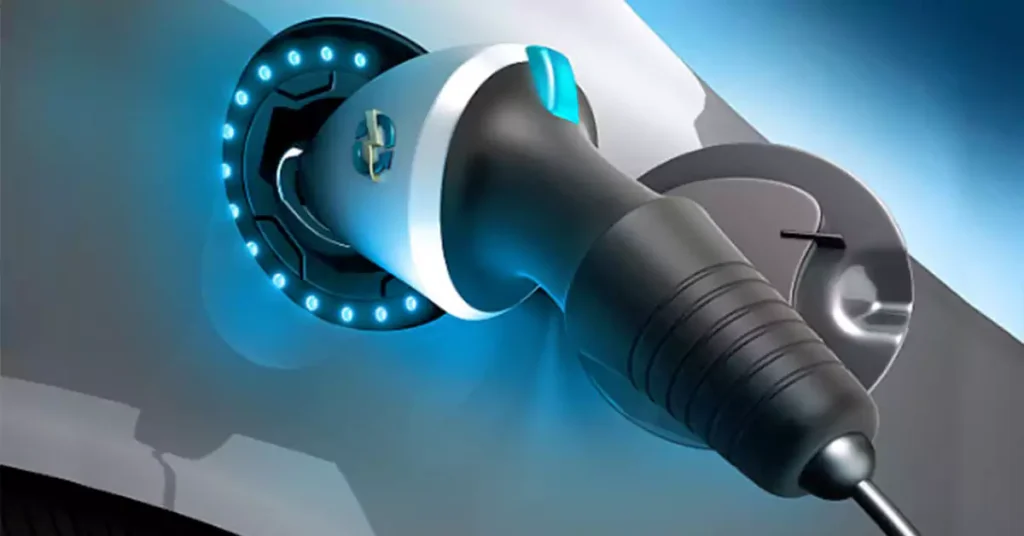
Given the high voltages and current requirements of EV charging stations, selecting the appropriate conduit is essential. Several factors must be taken into account when choosing the conduit for these installations:
EV charging stations, particularly those handling Level 2 or Level 3 charging, operate at higher voltages and currents than typical household installations. The conduits used must be able to safely handle these electrical loads without overheating or degrading over time.
Higher current generates more heat, especially in Level 2 and Level 3 chargers. Proper heat dissipation is vital to prevent overheating and potential fires. Metal conduits like RMC and IMC are preferred for their heat-conducting properties. Fire-resistant conduits further enhance the safety of EV charging systems, especially in confined or high-traffic areas.
Outdoor EV charging stations face exposure to a wide range of environmental conditions, including UV radiation, moisture, temperature extremes, and physical damage. PVC conduits, particularly those rated for UV resistance, are commonly used for outdoor applications. However, in high-traffic areas or locations subject to potential impact, RMC or IMC is often the better choice due to their superior durability.
Many EV charging installations require conduits to be placed underground. In these cases, the conduit must be able to withstand soil pressure, moisture, and chemical exposure. Schedule 80 PVC and RMC are commonly used for underground installations due to their strength and moisture resistance.
For installations where flexibility is required, such as tight spaces or areas with significant movement (e.g., near the charging equipment), LFNC is often the preferred choice. It offers flexibility while maintaining protection from moisture and corrosion.
EV charging stations can be installed in both residential and commercial environments, but the conduit requirements for each differ significantly.
Most residential charging stations are designed for Level 1 or Level 2 chargers, which have lower voltage and current demands. As a result, the conduit requirements are less stringent than for commercial installations. PVC conduit is commonly used in residential setups due to its affordability, moisture resistance, and ease of installation. For underground installations, Schedule 80 PVC is recommended to provide additional protection from physical damage.
In most residential applications, conduit runs are relatively short, and the conduits themselves do not need to be as robust as those used in commercial installations. However, it is still essential to use UV-rated PVC conduit if the installation is exposed to sunlight.
Commercial EV charging stations, particularly those with Level 3 chargers, require more robust conduit systems to handle the higher power demands. RMC or IMC is typically used for commercial installations due to their superior durability, fire resistance, and ability to protect against physical damage. These conduits are also suitable for outdoor installations, where they may be exposed to weather conditions and high traffic.
In commercial setups, multiple charging units are often installed, requiring a complex conduit network that must be carefully planned and installed to ensure safety and efficiency. Commercial installations also require grounding and may need expansion couplings to account for temperature changes that cause the conduit to expand or contract.

Level 2 chargers operate at 240V and typically require 30-40A circuits, making them a popular choice for home and workplace installations. Conduit solutions for Level 2 stations are relatively straightforward but must account for derating factors if multiple wires share a conduit.
Conduit Material: PVC conduits are often suitable for Level 2 installations, especially for residential settings where corrosion resistance and ease of installation are key. For commercial settings, EMT or RMC might be preferred for added durability.
Level 2 Charging Stations Requirements Data Sheet
Level 2 Charger Specs | Typical Circuit Amperage | Recommended Conduit |
240V, 40A | 40A | 1-inch PVC (Schedule 40) |
240V, 60A | 60A | 1 ½-inch EMT |
DC Fast Chargers operate at much higher voltages and currents (typically 400-800V and 100-400A), necessitating larger conduit sizes and robust protection. These stations are often installed in commercial or public areas where heavy-duty materials like RMC or schedule 80 PVC are required to handle higher electrical loads and provide protection from physical damage.
Conduit Size: Due to the increased current, fast charger installations often require large conduit sizes (e.g., 2-inch or larger), particularly when running multiple wires in the same conduit.
Heat Dissipation: Larger conduits help dissipate heat, reducing the risk of conductor overheating. NEC derating factors become especially important in fast charger installations, where multiple large conductors are present in a single conduit.
DC Fast Charging Stations Conduit Demands Data Sheet
DC Fast Charger Specs | Typical Circuit Amperage | Recommended Conduit |
480V, 100A | 100A | 2-inch RMC |
800V, 200A | 200A | 2 ½-inch Schedule 80 PVC |
As EV technology advances, charging stations will need to accommodate higher voltages and currents. Installing larger conduits during initial construction can save costs and future-proof installations for ultra-fast chargers (above 350 kW), which will require even larger wiring and conduit sizes.
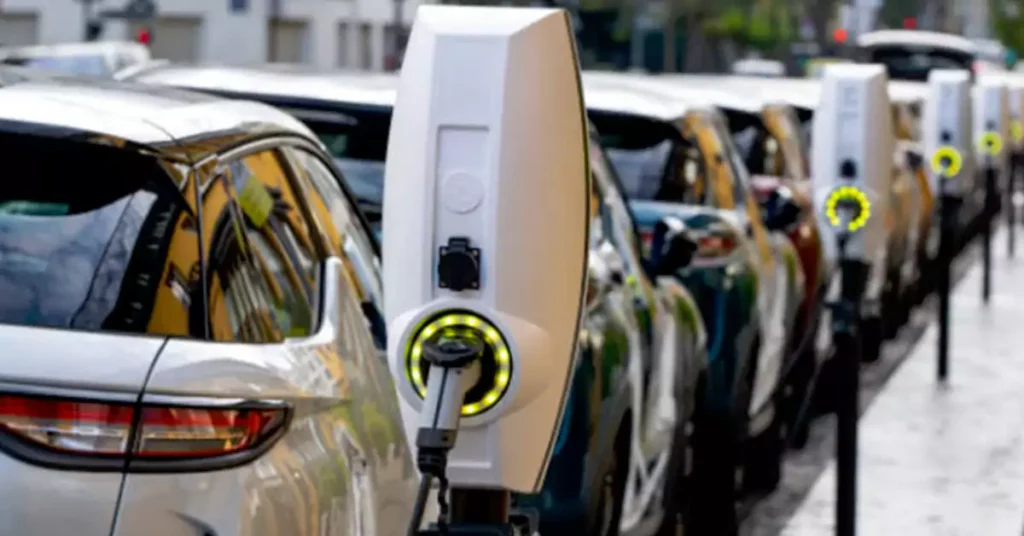
EV charging stations function by transferring electricity from the grid to an electric vehicle’s battery through a charging connector. The process is similar to refueling a gasoline vehicle, but instead of filling up with liquid fuel, the car is charged with electrical energy. Here’s an overview of how these stations operate:
The charging station is connected to a local power grid or renewable energy source, like solar panels. These stations have a charging port where drivers plug in their vehicles. Depending on the type of charger—Level 1, Level 2, or DC fast chargers—the station draws electricity at different rates from the power grid to charge the vehicle.
Most electric grids provide alternating current (AC) power. For Level 1 and Level 2 chargers, the vehicle’s onboard charger converts this AC into direct current (DC), which charges the battery. However, DC fast chargers (Level 3) skip the onboard charger, converting AC to DC directly at the charging station and supplying the battery with DC power for quicker charging.
The charging station communicates with the electric vehicle to ensure a safe and optimal charging process. The system exchanges information on the vehicle’s current battery charge and adjusts the power flow accordingly. Safety protocols, such as automatic shutoff when the battery is full, protect the car and its battery from overcharging or malfunction.
Once connected, the station begins charging the battery. The time it takes depends on the charger type: Level 1 chargers might take 8–12 hours, Level 2 chargers 3–8 hours, and DC fast chargers can provide an 80% charge in around 30–60 minutes. The station continuously monitors the charge, adjusting the flow of electricity to optimize battery health and prevent overheating.
Some EV charging stations are equipped with energy management systems that allow the distribution of electricity during peak demand times or balance power consumption across multiple charging units. This is especially relevant in commercial or public charging stations, where multiple vehicles are charging simultaneously.
전기 도관은 충전소를 전력망에 연결하는 고전압 케이블을 안전하게 보호하고 수용하는 데 중요한 역할을 합니다. PVC나 RMC와 같은 도관은 습기, 자외선, 물리적 손상과 같은 환경적 요인으로부터 배선을 보호합니다. 이러한 보호관은 전기 인프라의 장기적인 기능과 안전성을 보장하여 전체 충전 시스템의 핵심 요소입니다.
전기차 충전소용 도관을 설치하려면 시스템의 안전하고 효율적인 작동을 위해 신중한 계획과 세심한 주의가 필요합니다. 도관 설치 절차에 대한 단계별 안내는 다음과 같습니다.
팁: 더 자세히 알아볼 수 있습니다 전기 도관 설치 가이드 우리의 마지막 게시물에서 다루었던 내용입니다.
설치를 시작하기 전에 전선관의 배치를 계획하는 것이 중요합니다. 전원과 충전 장치의 위치를 파악하고, 전선관의 최단 직선 경로를 계획하십시오. 급격한 굽힘을 피하고 전선관 길이를 최소화하여 전압 강하 및 과열 위험을 줄이십시오.
설치 환경 및 전력 요구 사항에 따라 적절한 유형의 전선관을 선택하십시오. 옥외 또는 지하 설치에는 PVC 또는 RMC가 일반적으로 가장 적합하며, 실내 설치에는 EMT가 적합합니다. 모든 전선관이 UL 내화 등급과 같은 관련 안전 기준을 충족하는지 확인하십시오.
지역 전기 규정에 따라 정기적으로 고정하고 전원에서 도관을 설치하십시오. 옥외 설치 시에는 열 팽창 및 수축을 고려하여 팽창 커플링을 사용하십시오. 도관을 지하에 설치하는 경우, 적절한 깊이(일반적으로 주거용 설치의 경우 45~60cm)에 매설해야 합니다.
도관을 설치한 후, 피시 테이프를 사용하여 전선을 도관 안으로 당겨 빼세요. EV 충전소의 전압과 전류에 맞는 전선을 사용해야 합니다. 과열을 방지하기 위해 도관에 과도한 전류가 흐르지 않도록 주의하세요.
전선 설치가 완료되면 시스템에 이상이 없는지 확인하기 위해 설치를 테스트하십시오. 도통, 접지, 절연 저항을 점검하여 시스템이 안전하고 정상적으로 작동하는지 확인하십시오.
도관과 배선을 설치하고 테스트한 후, 제조업체의 사양에 따라 충전 장치를 설치하십시오. 도관이 장치에 단단히 고정되어 있고 모든 연결 부분이 단단히 밀봉되어 있는지 확인하십시오.
전기차 충전소에 전기 배선을 설치하려면 신중한 계획과 실행이 필요합니다. 안전하고 효율적인 배선 설치를 위한 몇 가지 모범 사례는 다음과 같습니다.
EV 충전소는 반드시 지역 및 국가 전기 규정을 준수합니다예를 들어, 미국 전기 규정(NEC)이 있습니다. 이러한 규정은 사용 가능한 전선관 유형, 올바른 설치 절차, 그리고 안전한 작동을 위한 전기 부하 용량을 규정합니다.
팁: 더 자세히 알아볼 수 있습니다 EV 충전소에 대한 글로벌 표준 우리의 마지막 게시물에서.
과도한 굽힘이나 긴 전선관은 전선을 끌어당기기 어렵게 만들어 전선 손상 위험을 높입니다. NEC 지침은 단일 전선관에서 90도 굽힘을 최대 4회까지만 허용합니다. 길이가 더 길면 전선에 무리가 가지 않도록 추가 풀 박스가 필요합니다.
옥외 또는 지하 설치 시에는 방수 피팅과 팽창 커플링이 필수적입니다. 팽창 커플링은 배관이 열팽창 및 수축을 겪는 설치 환경에 필수적이며, 시간이 지남에 따라 배관이 파손되거나 분리되는 것을 방지합니다.
금속 전선관 시스템의 경우, 전선관 자체가 접지 경로 역할을 하여 전기적 고장 발생 시 추가적인 보호 기능을 제공할 수 있습니다. 전선관 시스템의 적절한 접지는 전반적인 안전, 특히 고전압 설비의 안전에 매우 중요합니다.
통행량이 많거나 중장비가 있는 곳에서는 보호되거나 은폐된 공간에 전선관을 설치하면 물리적 손상을 방지할 수 있습니다. 경질 금속 전선관(RMC)은 물리적 충격에 대한 탁월한 보호 기능을 제공하므로 이러한 환경에서 사용해야 합니다.
전기 배선 시스템은 모든 EV 충전소의 핵심 구성 요소로, 충전 장치에 전원을 공급하는 고전압 케이블을 보호합니다. 적절한 배선 재료를 선택하고 적절한 설치 기술을 확보하는 것은 시스템의 안전성, 효율성 및 수명을 유지하는 데 필수적입니다. 가정용 레벨 1 충전기든 상업용 DC 고속 충전기든, EV 충전소에서 배선의 역할을 이해하면 성공적이고 안전한 설치를 보장하는 데 도움이 됩니다.

